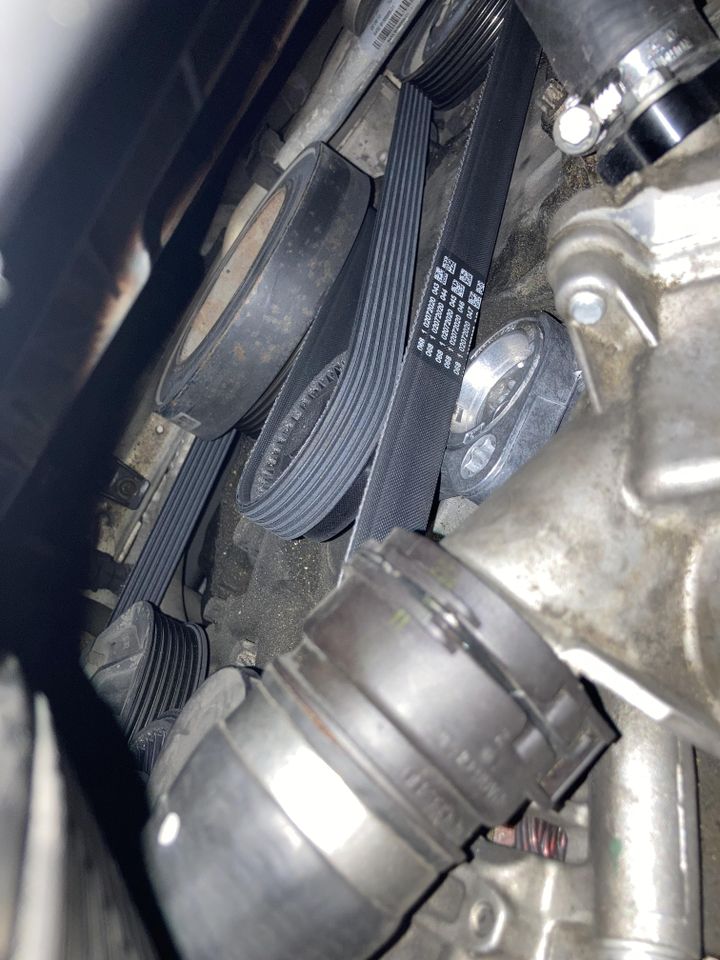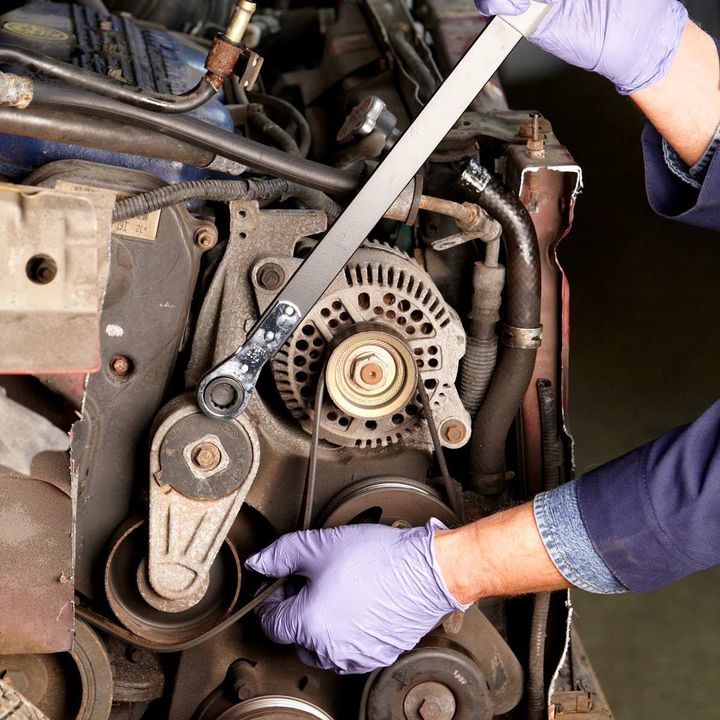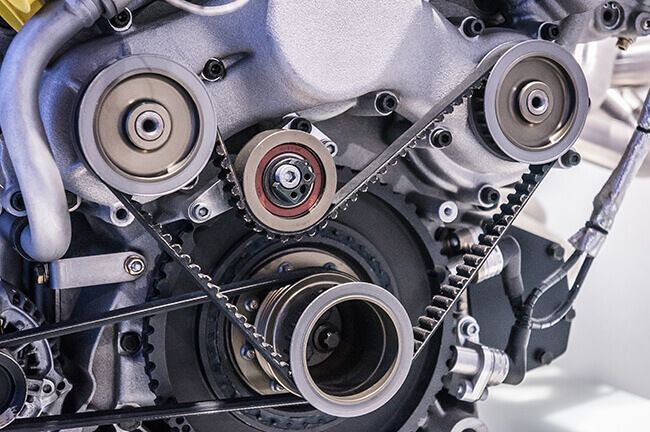


The serpentine belt is a critical component in modern vehicles, responsible for driving various engine accessories such as the alternator, power steering pump, air conditioning compressor, and sometimes the water pump. It is a single, continuous belt that snakes around multiple pulleys, hence the name "serpentine." When the serpentine belt comes off or keeps slipping off, it can lead to serious consequences, including loss of power steering, battery drainage, engine overheating, and potential damage to other components. Understanding the reasons behind this issue and addressing them promptly is crucial for maintaining the proper functioning of your vehicle.

Before we dive into the reasons why your serpentine belt keeps coming off, let's first understand its importance. The serpentine belt is a single, continuous belt that drives multiple accessories in your engine, such as:
| Accessory |
|---|
| Alternator |
| Power Steering Pump |
| Air Conditioning Compressor |
| Water Pump (sometimes) |
It's a vital component that keeps your car running smoothly, and when it fails, it can lead to a cascade of issues.
Over the years, I've identified several common culprits that can cause your serpentine belt to keep coming off:
Worn or Defective Tensioner/Idler Pulleys
Misalignment of Pulleys
Incorrect Belt Routing
Worn or Damaged Belt
Leaking Fluids
Let's explore each cause in detail:
The tensioner pulley applies tension to the belt to keep it tight. If it is worn out or not functioning properly, the belt can become loose and slip off. Similarly, worn idler pulleys can cause misalignment and the belt to dislodge.
If any of the pulleys that the serpentine belt runs on are misaligned, it can cause the belt to walk off its path and come loose. This is often due to improper installation or pulley damage.
Improperly routing the serpentine belt during installation can cause it to constantly come off the pulleys. Always refer to the routing diagram for your specific vehicle.
A serpentine belt with cracks, glazing, or missing chunks of rubber can slip and dislodge from the pulleys. Belts need replacement at the recommended intervals.
Oil, coolant, or power steering fluid leaks that contaminate the belt can cause it to slip and come off the pulleys.
Before attempting any repairs, it's essential to properly inspect and diagnose the issue:
Visual Inspection
Belt Tension Check
Pulley Inspection
Tensioner Check
Routing Check
Here's a breakdown of each step:

Check the serpentine belt for:
| Condition |
|---|
| Cracks |
| Glazing |
| Missing Chunks |
| Contamination from Leaking Fluids |
These indicate the belt needs replacement.
Use a belt tension gauge
Check the deflection by pushing on the longest span of the belt
Excessive deflection indicates a loose belt.
Spin each pulley
Check for excessive play, noise, or roughness
Indicates a worn bearing that needs replacement
Check for pulley misalignment
With the belt removed:
Check if the automatic tensioner moves freely
Check if it retracts fully
A stuck or seized tensioner needs replacement.
Refer to the belt routing diagram and ensure the belt is installed correctly on all pulleys.
Once the cause has been identified, it's time to implement the appropriate repairs and solutions:
| Cause | Repair/Solution |
|---|---|
| Worn Tensioner/Idler Pulleys | Replace the faulty tensioner and any worn idler pulleys during the serpentine belt replacement. |
| Pulley Misalignment | Realign or replace any misaligned pulleys. Use a pulley alignment tool if available. |
| Incorrect Routing | Carefully follow the routing diagram and use a belt installation tool if needed to route the new belt properly. |
| Worn/Damaged Belt | Replace the serpentine belt with one from a reputable brand matched to your vehicle's specifications. |
| Fluid Leaks | Identify and repair any oil, coolant or power steering fluid leaks that are contaminating the belt. Clean all pulleys thoroughly before installing a new belt. |
While repairs are necessary to address the immediate issue, preventive maintenance is crucial to avoid future problems with your serpentine belt:
Regular Inspections
Use Belt Installation Tools
Replace Worn Components
Fix Fluid Leaks Promptly
Proper Break-In
Let's dive into each point:
Visually inspect the serpentine belt condition and check for proper tension periodically, as recommended in your owner's manual.
Using the right tools like tensioner wrenches and routing tools makes installation easier and prevents misalignment.
Don't just replace the belt – also replace worn tensioners, idlers, and pulleys to ensure proper belt tracking.
Repair any fluid leaks immediately to prevent belt contamination and slippage.
After installing a new belt, follow the break-in procedure by avoiding high engine loads for the first 30 minutes.
While the cost of replacing a serpentine belt may seem insignificant, it's essential to consider the potential additional expenses:
| Component | Cost Range |
|---|---|
| Serpentine Belt | $25 - $75 |
| Labor (if done by a mechanic) | $75 - $150 |
| Total (on average) | $100 - $225 |
Additional costs may apply if other components like tensioners, idlers, or pulleys also need replacement.
Doing it yourself can save on labor costs.
Prices vary based on vehicle make/model and labor rates in your area.
It's always a good idea to plan ahead and budget for these repairs to avoid unexpected expenses.
In conclusion, a serpentine belt that keeps coming off is a frustrating issue that can leave you stranded and potentially cause further damage to your vehicle. By understanding the common causes, performing proper inspections and diagnoses, and implementing the appropriate repairs and preventive maintenance, you can avoid this headache.
Remember, ignoring the warning signs or delaying repairs can lead to more significant problems down the road. As a mechanic, I've seen too many cases where a simple serpentine belt issue escalated into a costly repair due to neglect.
So, if you notice your serpentine belt coming off, don't hesitate to have it checked out by a professional. A little proactive maintenance can save you a lot of time, money, and frustration in the long run.
Inspect the belt for cracks, glazing, missing chunks, or contamination from leaking fluids. Excessive deflection when pushing on the belt also indicates it needs replacement.
The tensioner pulley can fail due to worn bearings or seizing up, which prevents it from applying proper tension to the serpentine belt.
A belt tension gauge ensures the serpentine belt is tightened to the correct specification, preventing it from being too loose or too tight.
Yes, if any of the pulleys that the serpentine belt runs on are misaligned, it can cause the belt to walk off its path and come loose.
Spin each pulley and check for excessive play, noise, or roughness, which can indicate a worn bearing or misalignment.
It's recommended to use tools like tensioner wrenches, pulley alignment tools, and routing tools to ensure proper installation and alignment.
Follow the inspection intervals recommended in your vehicle's owner's manual, typically every 30,000 to 60,000 miles or annually.
Yes, oil, coolant, or power steering fluid leaks that contaminate the belt can cause it to slip and come off the pulleys.
After installing a new belt, avoid high engine loads for the first 30 minutes to allow the belt to properly seat and conform to the pulleys.
It's recommended to also replace worn tensioners, idlers, and pulleys during a serpentine belt replacement to ensure proper belt tracking and longevity.

Sarah isn't your average gearhead. With a double major in Mechanical Engineering and Automotive Technology, she dived straight into the world of car repair. After 15 years of turning wrenches at dealerships and independent shops, Sarah joined MICDOT to share her expertise and passion for making cars run like new. Her in-depth knowledge and knack for explaining complex issues in simple terms make her a valuable asset to our team.











